How to Do a Press Release – 5 Brilliant Must Followed Rules
What is a press release?
The Balance Small Business has defined press release as a written communication that reports specific but brief information about an event, circumstance, or other happening. It’s typically tied to a business or organization and provided to media through a variety of means.
Getting the media to grab and run your press release at once is not simple, as it depends on many different factors such as whether the event or circumstance is something that might interest their readers or listeners, or if it benefits the community in some way. If you’re lucky, your press release may be picked up by bloggers, Tweeters, and others who read it and find it worthy of promoting within their social networks.
Two basic types
There are two basic kinds of press release.
The first one is known as “immediate release”, which anyone can share the information as soon as the release is made public.
The second one may limit the time that allows only certain media sources to report them immediately. They’re offered to other news services, websites, or blog owners for publication later.
The main purpose
Different from news, a press release is a document that sticks to a strict format and adheres to three marketing and promotional purposes:
- Letting the media knows about an event to pass the information along.
- Letting the media knows about your business, getting a reporter to see a story in your press release and write an actual news article about it.
- Helping promote your business’ appearance on the Internet via blogs, websites, and social network.
Format your press release in the best way
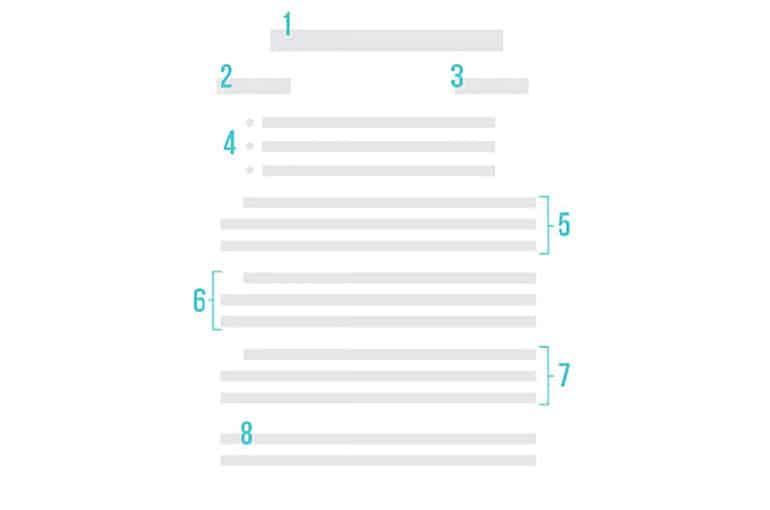
- The headline of a press release.
- For immediate release date of publish
- Press contact info: name, email, phone.
- Summary bullet points.
- Intro paragraph: introduce what your press release is about.
- The second paragraph should go into a bit more detail and include a relevant quote from a team member.
- The third paragraph should include relevant information that the reader needs to know.
- This section should contain the boilerplate of your organization.
How to do a press release with 5 steps
#1 Make your headline irresistible
Just like creating a title for a blog post, setting up your press release for success starts with your headline. You only have one line to work with, which can seem challenging, and consider diction carefully to make your headline captivating.
Use action verbs, clear, understandable language, and keep your headline simple and short, fortune (and search engines) reward the brief, so keep your title to one line to clearly focus people’s attention on your topline message.
Most importantly, make it interesting: Keep in mind that reporters get dozens, if not hundreds, of releases each day, so invest the time to write a compelling headline. It’s worth the time and effort on your part.
#2 Convey the news’s value to the press
For reporters, analysts, influencers, or followers to be inclined to share your announcement, you need to tell them upfront why they should care.
The first paragraph of your release should cover the who, what, why, where, and how of your new launch, update, or development. Reporters don’t have a ton of time to sift through details and fluffy background information, they just need the facts that’ll help them tell your story to someone else from a position of authority.
There shouldn’t be any new, crucial information covered after this section that the reader could potentially miss.
#3 Offer a tempting quotable
Once you’ve set the scene, it’s time to bring your details to life with a quote that reporters can use for context around your announcement and help paint a picture of how your news affects the given industry, customer base, and landscape.
Ideally, quotes will be from key stakeholders in your company including your executive team, project leads, or those directly impacted by your announcement. Quoting key figures and authorities underlines the importance of your development. The chosen quote should shape your narrative and emphasize the core of the announcement. Don’t ask everyone in your office for a comment or feel compelled to quote all 25 people included in the acquisition, just pick one or two critical spokespeople and focus the quotes around their unique perspective.
#4 Provide valuable background information
In this last paragraph, keep in mind that the reader already has all of the vital details and information they need to file a story or spread the word.
It can be tempting to provide superfluous facts and tidbits about your company or the development of your announcement, a piece of writing are lacking if it isn’t drawn-out and just shy of being a novella. However, a press release needs to be helpful and concise.
Offer details here that strengthen your narrative, like creative or noteworthy ways your company developed the project or announcement at hand. Or, when applicable, comment on future implications of your announcement.
#5 Summarize the “who” and the “what” in a boilerplate
Twitter is chock-full of reporters lamenting press releases or pitches that don’t clearly explain what the company does or what the announcement is actually about. Instead, make your release incredibly easy to reference.
Describe what your company does in clear, plain language, include a link to your company’s homepage early on, and make your boilerplate succinct and straightforward. If you cite data, include a reference link for the data source, and make sure every name in the release has an associated title and company as well.
To keep yourself honest on this front, ask a friend or colleague to read the release without context and ask if they can easily and readily explain why the announcement matters, what your company does, and why the executives included are quoted. If the answer to any of those questions is no, get back to the drawing board.
The key to keeping your PR strategy new school is forgetting preconceived notions of what public relations is and instead focusing on creating highly remarkable content. Traditional press releases can still be really valuable when executed well, so instead of ditching releases as a tactic, give them a modern makeover to make them more useful for your marketing.
Press release samples and examples
#1 Apple: “Apple adds Earth Day donations to trade-in and recycling program”
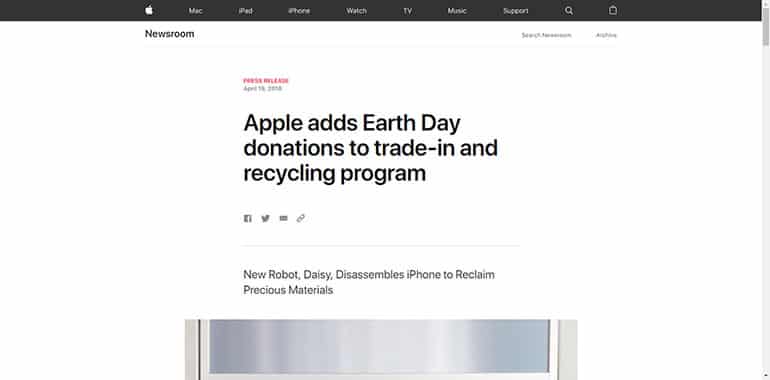
#2 Associated Press: “AP and Red Bull Media House collaborate to provide premium sports, music and lifestyle content”
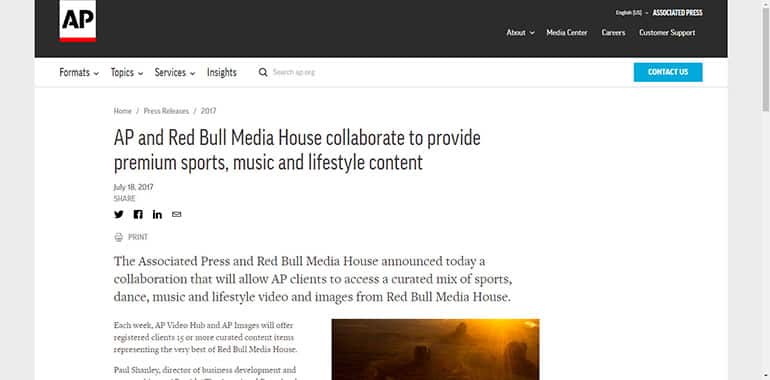
#3 Starbucks: “Mission and purpose: Veterans, caregivers find new direction at Dog Tag Bakery”
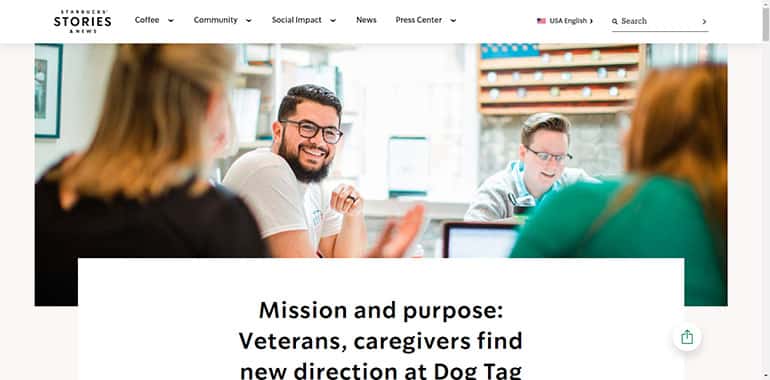
#4 Fender: “Hero of the underground: Fender celebrates 60 years of Jazzmaster innovation”
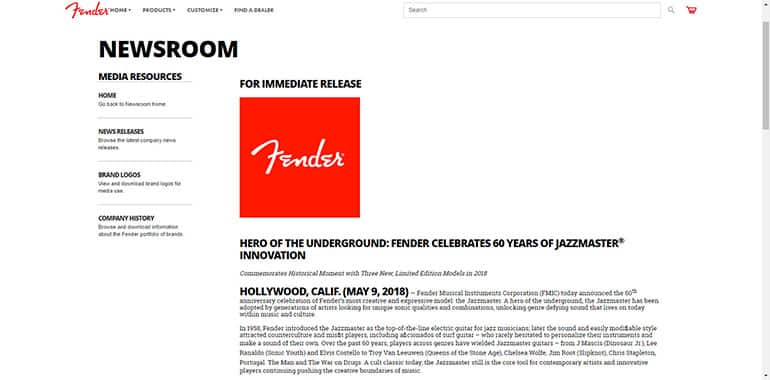
Why should business send a press release?
Organizations of all sizes use press releases to achieve their goals. Some common objectives include:
- To get media coverage: This would be when your company releases a new product or feature.
- To build your brand’s reputation: Maybe you’re relaunching your brand image and want more people to know.
- To manage a crisis: When things go wrong, it’s often beneficial to break the story yourself first.
- To build backlinks from trusted media sites: This could be when you publish a new e-book, report, or blog and you want a reputable source to link back to the information.
- As a cost-effective way to market your organization: A well-written press release can help garner public attention due to news coverage.
When should a press release be sent?
Any time you have something newsworthy to share. This includes:
Breaking news announcements: News outlets want to be first to cover the news when it breaks. So, lend them a helping hand.
Product launches: New products often make for good news pieces.
Events: These can offer reporters something timely and interesting to share with their audiences.
Partnerships: If you team up with another interesting company, the news may want to know.
Sharing research: Unique data and original insights are always interesting.
Awards: Don’t be afraid to talk yourself up (a little bit).
Hiring new executives: At larger organizations, this can be considered important news.
Crisis management: When something bad happens, it’s best to get in front of it (before someone else does).
Make sure you have something your audience (and the media’s audience) will care about. This will dramatically increase the odds that your release will earn coverage.
Final lines
Undeniably, a press release is one of the most crucial updates to make to your PR strategy. As it gives you an opportunity to reach out to targeted audiences, and even reporters.
Though conventional marketing practice still plays a role of getting your SMBs into popular publications, it’s time to stop playing the waiting game and generate your own buzz. We believe that press release creates opportunities that were not there before, and carve out a place for your company, building meaningful mindshare with your potential customers in the process.









